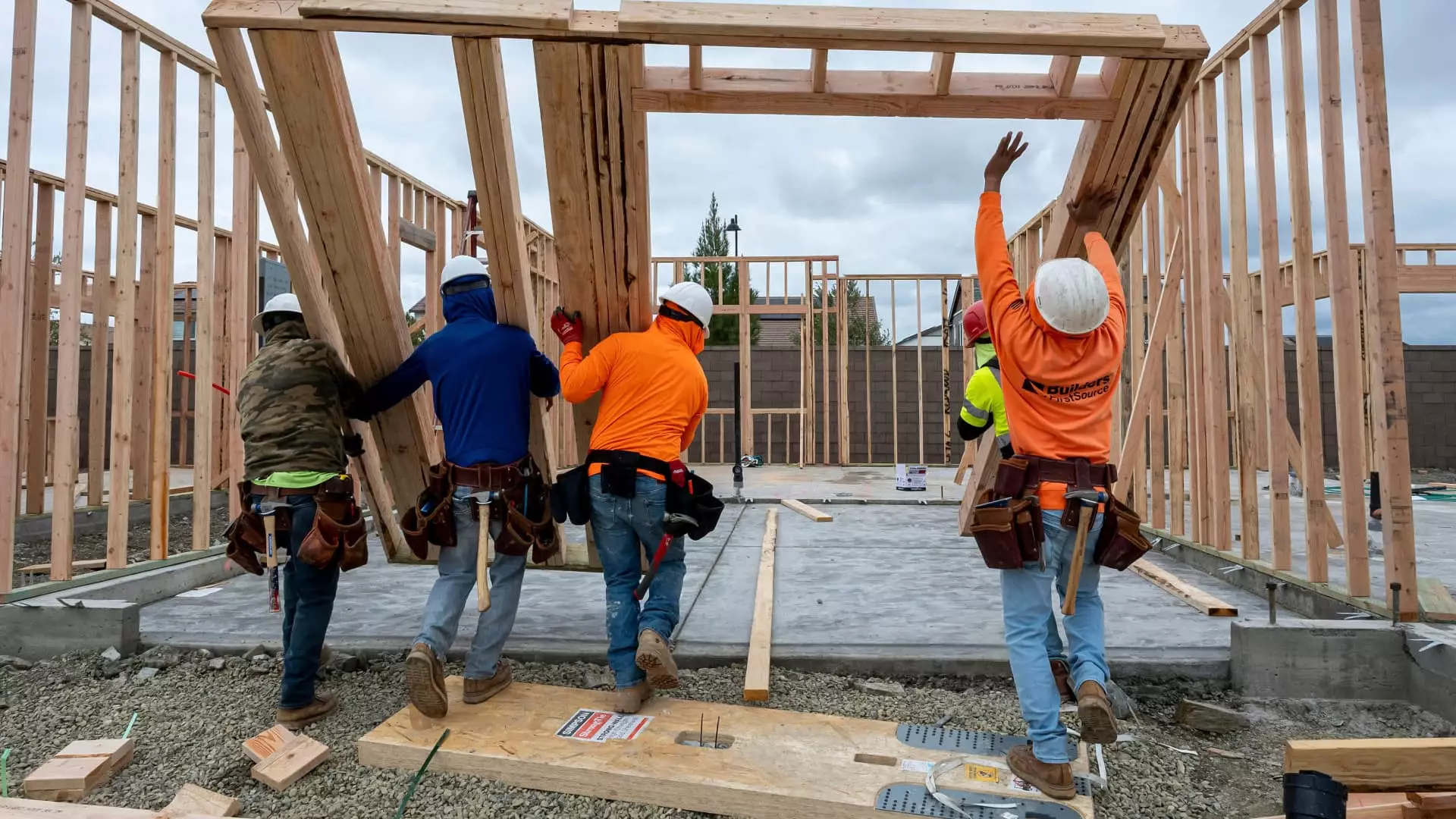As we traverse through 2023, the landscape of home construction paints a troubling picture. The National Association of Home Builders (NAHB)/Wells Fargo Housing Market Index (HMI) has seen a daunting drop to 32 in June—a stark indicator that the mood among builders is low. With anything below 50 signaling negativity, this figure is more than just a number; it is a reflection of broader economic worries that have left even the most optimistic builders frustrated. In the context of analysis, this decline is noteworthy because it is only the third time since 2012 that the index has reached such depths, following previous downturns in April 2020 and December 2022.
The sentiments among builders underscore the severe impact of soaring mortgage rates, which are edging buyers out of the market. In an environment where affordability is paramount, it is disheartening to witness the HMI, once buoyed by historic lows in interest rates during the pandemic, now crumbling under the weight of economic uncertainty.
Price Cuts: A Desperate Move for Traction
The situation has prompted a significant number of builders to reevaluate their pricing strategies. The fact that 37% of builders resorted to price cuts in June—the highest percentage recorded since the NAHB began tracking such metrics—is a telling response to stagnant buyer interest. This escalation in price reductions reflects a desperate attempt to entice hesitant consumers to consider home purchases. The average price cut of around 5% may seem modest, yet it betrays a deeper anxiety lurking within the market.
It is alarming to consider that this pattern of price reductions is not isolated but rather indicative of a larger failing in buyer confidence. Builders like Buddy Hughes, the NAHB chair, have made it clear that without aggressive measures, potential homebuyers are likely to remain on the sidelines, leading to further stagnation in a market already riddled with complications.
Sales Expectations Dim as Traffic Plummets
The broader implications of these dynamics manifest not just in residential price adjustments but also in sales expectations for upcoming months. With future sales expectations downgrading to 40, it becomes painfully evident that the builders’ outlook is clouded by more than just current economic indicators. The metric for buyer traffic, plummeting to 21—the lowest since 2023—paints a stark picture of waning consumer interest.
In an economy where consumer confidence is crucial to fueling demand, such declines signal a worrisome trend that could stymie growth for the housing sector. The hesitance displayed by buyers in the face of high mortgage rates and uncertain economic conditions brings into question the sustainability of residential construction in the coming years.
Regional Disparities: The South and West Hit Hardest
As we analyze the regional performance, it’s noteworthy to mention that sentiment in the South and West—the two regions responsible for a substantial portion of U.S. home production—has faltered significantly. While these areas have historically represented growth within the housing market, the current data suggests that even the most prosperous regions are not immune to the economic headwinds defined by rising costs and cautious consumer behavior.
This uneven dynamism reveals that national trends do not always capture local realities. Builders in these regions are feeling the pressure more acutely, potentially leading to an even greater decline in home starts than projected by NAHB’s forecasting for 2025.
The deeply entrenched patterns in the housing market indicate that builders, consumers, and policymakers alike face a complex maze of challenges. The intersection of high mortgage rates, subsequent price cuts, and gloomy sales expectations underscores a marketplace that is crying out for resilience. As a proponent of center-right liberalism, I contend that it is essential for us to embrace market-oriented solutions and innovative policy tools to reinvigorate confidence within both the housing market and economy at large. While the path ahead may be fraught with difficulties, it is imperative to foster conditions that will encourage sustainable growth and restore expectations in the months ahead.

